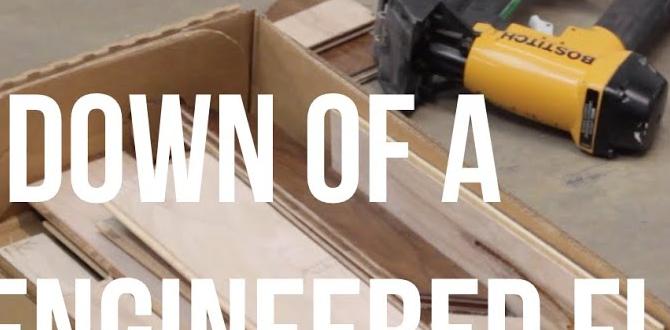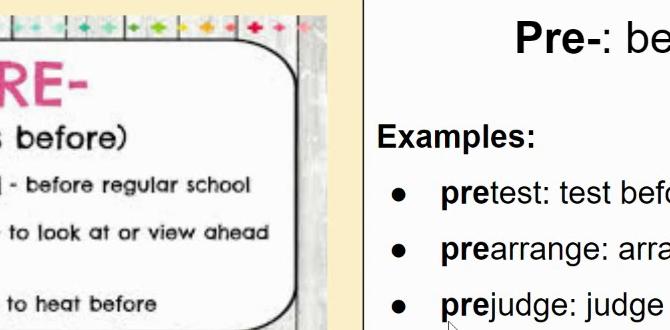Quick Summary:
Replacing springs inside your nailer is a straightforward DIY repair that restores its firing power. With basic tools and our clear, step-by-step guide, you can get your nailer working like new again, saving you money and hassle. Follow along to learn how to safely and effectively swap out those worn-out springs.
Hey there, fellow woodworkers and DIY warriors! Jack Shaffer here, your go-to guy for all things nailers. Sometimes, your trusty nail gun starts acting up. Maybe the nails aren’t sinking quite as deep as they used to, or it feels a bit sluggish. Often, the culprit is a set of worn-out springs inside the tool. Don’t let a weakened nailer slow you down! Replacing these springs might sound a bit daunting, but I promise you, it’s a manageable fix that can bring your nail gun back to its full glory.
In this guide, I’ll walk you through the process step-by-step. We’ll cover what signs point to spring failure, what tools you’ll need, and how to safely disassemble and reassemble your nailer. You’ll be nailing like a pro again in no time. Let’s get your nailer back in fighting shape!
Table of Contents
Why Your Nailer Springs Might Need Replacing
Nailer springs are the unsung heroes of your tool. They work hard, compressed and expanded with every trigger pull. Over time, constant use, extreme temperatures, or even just age can cause these springs to lose their tension. Think of it like a rubber band that’s been stretched too many times – it just doesn’t snap back with the same force.
When this happens, you’ll likely notice a few tell-tale signs:
- Dull Nails: Nails aren’t fully driving into the wood, leaving the heads exposed.
- Weak Firing: The “pop” of the nailer isn’t as sharp or powerful.
- Intermittent Problems: The nailer might work sometimes but not others, especially when it’s cold.
- Stiffness: The piston or driver assembly might feel stiff or sluggish when you manually move it.
These symptoms usually indicate that the main drive spring (or other internal springs, depending on the model) is fatigued. Don’t worry, this is a common issue, and it’s much cheaper to replace the springs than to buy a whole new nailer.
What You’ll Need: Your Spring Replacement Toolkit
Before we dive into the disassembly, let’s gather your supplies. Having everything ready will make the process smooth and efficient. Most nailers require similar basic tools for this job.
Essential Tools:
- Safety Glasses: Always, always, always protect your eyes. Springs can be under tension, and small parts can fly.
- Work Gloves: To protect your hands and improve grip.
- Screwdriver Set: You’ll likely need Phillips head and potentially flathead screwdrivers in various sizes. Check your nailer’s manual for specifics.
- Allen Wrenches (Hex Keys): Some nailers use Allen bolts for housing.
- Pliers: Needle-nose pliers can be very helpful for gripping small parts or gently pulling out old springs.
- Small Pick or Awl: Useful for hooking or nudging stubborn springs or retaining clips.
- Soft Mallet or Rubber Hammer: For gently tapping parts into place if needed.
- Rag or Paper Towels: For cleaning parts and wiping away old grease or debris.
- Lubricant (Optional but Recommended): A small amount of tool oil or silicone lubricant can help keep internal parts moving smoothly. Check your manual for recommended types.
- Replacement Springs: This is crucial! Make sure you have the correct springs for your specific nailer model.
- Service Manual for Your Nailer: This is your best friend for this project! It will have model-specific diagrams and disassembly instructions. You can often find these on the manufacturer’s website.
Having a clean, well-lit workspace is also a must. Lay out your tools and parts in an organized manner so you don’t lose anything.
Step-by-Step Guide to Replacing Nailer Springs
Alright, let’s get down to business! Remember to work patiently and methodically. If you’re unsure about any step, refer to your nailer’s service manual.
Step 1: Safety First – Disconnect Power and Air
This is non-negotiable! Before you do anything, ensure the nailer is completely safe to handle.
- For Pneumatic Nailers: Disconnect the air hose from the nailer.
- For Electric/Cordless Nailers: Remove the battery pack. If it’s corded, unplug it from the power source.
Always double-check that there’s no power or air supply to the tool.
Step 2: Clear the Nailer
Remove any nails from the magazine. Press the safety nose against a piece of scrap wood (while still mindful of the disconnected power/air) to ensure the mechanism is clear. This prevents accidental firing during disassembly.
Step 3: Locate the Access Point for Springs
The main drive spring is usually housed in the rear of the nailer, often accessible after removing the handle assembly or a specific cap. Consult your service manual to pinpoint the exact location and any specific screws or caps you need to remove.
A common place to access the main spring mechanism is by unscrewing the rear cap or handle housing. Look for screws around the base of the handle or the very top of the nailer.
Step 4: Disassemble the Nailer Housing
Using the appropriate screwdrivers or Allen wrenches, carefully remove the screws holding the housing together. Keep track of which screws go where, as they can sometimes be different lengths.
As you loosen the screws, you might feel the housing come apart. Gently separate the parts. Be prepared for small components like O-rings, seals, or washers to be present. Don’t force anything; if it feels stuck, check again for hidden screws or clips.
[External Link]: For a visual aid on how general compressor-driven tools are repaired, the Engineering Toolbox offers insights into pneumatic principles that are relevant to understanding how your nailer functions.
Step 5: Access the Main Drive Spring
Once the main housing is open, you’ll typically see the piston and driver assembly. The main drive spring usually surrounds or is attached to the piston rod. It might be held in place by a cap, a retaining clip, or simply be under tension.
CAUTION: Springs can be under significant compression. Be mindful of this as you work. It’s advisable to point the nailer away from yourself and others when releasing spring tension.
If the spring is under tension, you might need to carefully hold the piston assembly while you unscrew a cap or remove a retaining pin. A small pick or awl can be useful here to carefully dislodge the spring.
Step 6: Remove the Old Springs
With the housing open and the spring mechanism exposed, carefully remove the old spring(s). If they are coiled springs, they might slide off the piston rod. If they are held by clips, gently pry them off.
If you are replacing multiple springs, lay them out and label them to ensure you know which old spring corresponds to which new one.
Step 7: Clean and Inspect Internal Parts
While you have the nailer disassembled, take the opportunity to clean any debris, old lubricant, or dust from the internal components. A clean rag and perhaps a small brush can work wonders. Inspect the piston, cylinder walls, and any seals for wear or damage.
If your nailer has a separate nose spring or other minor springs, this is a good time to inspect and replace them too if they appear worn or damaged.
Step 8: Install the New Springs
This is where your new springs come into play. Carefully slide or place the new spring(s) onto the piston rod or into their designated locations. Ensure they are seated correctly and aligned properly.
If the spring needs to be compressed to fit, do so slowly and steadily. If there’s a retaining cap or clip, secure it firmly. Double-check that the spring is fully seated and not binding.
Tip: A light application of silicone lubricant on the piston and inside the cylinder can aid in smooth operation and prolong the life of the new springs and seals.
Step 9: Reassemble the Nailer Housing
Now, reverse the disassembly process. Carefully put the housing components back together. Make sure any O-rings or seals are properly seated and not pinched.
Align the housing parts precisely and reinsert the screws. Tighten them gradually and evenly in a star pattern to ensure the housing seals properly without any stress points.
Refer back to your service manual’s diagrams to ensure everything is in its correct place. Recheck all screws are reinserted and tightened appropriately.
Step 10: Test Your Work
Once the nailer is fully reassembled, reconnect the power or air supply.
- For Pneumatic Nailers: Connect the air hose.
- For Electric/Cordless Nailers: Reinstall the battery or plug it in.
Now, the moment of truth! Test fire the nailer into a piece of scrap wood in a safe direction. Listen for a strong, consistent firing sound. Check that the nails are driving fully into the wood.
If it’s working well, congratulations! You’ve successfully replaced your nailer springs.
Common Nailer Spring Types and Troubleshooting
Nailers vary, and so do their spring systems. Understanding these differences can help with troubleshooting.
Main Drive Spring
This is the most common spring to replace. It’s responsible for driving the nail into the material. When it weakens, you get incomplete nail sets, as we’ve discussed. These are typically coiled springs around a piston.
Nose Spring / Safety Spring
Some nailers have a spring in the nose assembly that helps it seal against the workpiece and ensures the safety mechanism is engaged. If this spring is damaged, the nailer might not fire consistently or could fire erratically.
Return Springs
Less common for DIY replacement, these springs help return parts to their original position. If they fail, you might experience jams or sluggish operation.
Troubleshooting Recap:
- No Firing: Could be a safety nose issue, no air/power, or a critical internal spring failure.
- Weak Firing: Almost always a sign of a fatigued main drive spring.
- Jams: Can be caused by debris, bent driver blades, or faulty return springs/mechanisms.
- Air Leaks: Often related to O-rings or seals, not typically springs, but worth checking during disassembly.
If after replacing the springs, your nailer still isn’t functioning correctly, it might be an issue with the driver blade, piston, air valve, or another component. In such cases, consider consulting a professional repair service or the manufacturer.
When to Call a Professional (or Consider Replacement)
While replacing springs is a common and often simple DIY repair, there are times when it might be best to seek professional help or even consider a new tool:
- Complex Designs: Some high-end or specialized nailers have very intricate internal mechanisms that are difficult to access or reassemble without expert knowledge.
- Damage Beyond Springs: If you discover cracked housings, damaged pistons, or worn-out valve assemblies during disassembly, the repair cost can quickly escalate.
- Lack of Service Manual: Without a proper guide, attempting this repair can lead to more damage than good.
- Cost vs. Benefit: Sometimes, the cost of replacement parts and your time might approach the cost of a new, entry-level nailer. If your current nailer is very old or has had many issues, it might be time for an upgrade.
For example, if you have a De Walt nailer and the service manual is hard to find, or the repair seems significantly more involved than a spring swap, it’s worth weighing your options.
Table: Common Nailer Issues and Potential Fixes Beyond Springs
Here’s a quick reference to common nailer problems that might not be spring-related:
| Symptom | Potential Cause | Suggested Action |
|---|---|---|
| Nailer won’t fire at all | No air/power, safety nose blocked or damaged, faulty trigger switch, severe internal jam. | Check power/air, clear nose, inspect trigger, check driver & piston for obstruction. |
| Nails jam frequently | Bent driver blade, debris in feeding mechanism, bent magazine, incorrect nail collation. | Inspect & replace driver, clean feeder, check magazine alignment, use correct nails (e.g., Bostitch nails if it’s a Bostitch nailer). |
| Air leaks from the tool | Worn O-rings or seals, loose fittings, cracked housing. | Inspect and replace seals/O-rings, tighten fittings, check housing for damage. |
| The driver blade is sticking | Lack of lubrication, bent driver, damage to the cylinder wall. | Lubricate, inspect & straighten/replace driver, check cylinder. |
Remember, always refer to your specific tool’s manual. Manufacturers like Paslode offer extensive support resources that can be invaluable.
Conclusion
See? Replacing the springs inside your nailer isn’t some big, scary job reserved only for seasoned mechanics. With a bit of patience, the right tools, and a clear guide like this one, you can absolutely tackle it yourself. You’ll not only save money but also gain a deeper understanding and appreciation for the tools you rely on day in and day out.
By following these steps, you’ll be able to diagnose spring issues, safely disassemble your nailer, replace the worn-out components, and reassemble it with confidence. That satisfying “thwack” of a perfectly driven nail will be back in no time. Keep those projects moving forward, and happy building!
Frequently Asked Questions (FAQs)
Q1: How often should nailer springs be replaced?
A1: There’s no set schedule. It depends on how much you use your nailer. If you notice a decline in performance (weak nail driving), it’s time to inspect and likely replace them. Heavy daily use might require checks annually, while occasional DIY use might mean they last for many years.
Q2: Can I use springs from a different brand of nailer?
A2: It’s highly recommended to use only springs specifically designed for your nailer model. While some might look similar, the tension, length, and diameter are precision-engineered. Using the wrong springs can lead to poor performance or even damage to your tool.
Q3: My nailer still isn’t working after replacing the springs. What else could it be?
A3: If new springs don’t solve the problem, the issue might be with the driver blade (bent or dull), the piston, the cylinder walls (scored or damaged), the air valve, or trigger mechanism. Check your service manual for further troubleshooting steps or consider professional inspection.
Q4: Do all nailers have easily replaceable springs?
A4: Most common pneumatic and electric nailers are designed with user-serviceable parts, including springs. However, complex or specialized models might have more integrated systems, making spring replacement trickier. Always consult your specific model’s service manual.
Q5: Is it safe to work on a nailer if I’m not a professional?
A5: Yes, with proper precautions. Always disconnect power and air, wear safety glasses, and work in a clean, organized space. Take your time, refer to your manual, and don’t force parts. If you feel uncomfortable at any point, it’s okay to stop and seek help.
Q6: What is the “driver blade” and how does it relate to springs?
A6: The driver blade is the part that actually strikes the nail head to drive it into the material. The main drive spring powers the movement of the piston, which in turn pushes the driver blade. A strong spring ensures a powerful strike from the driver blade.



